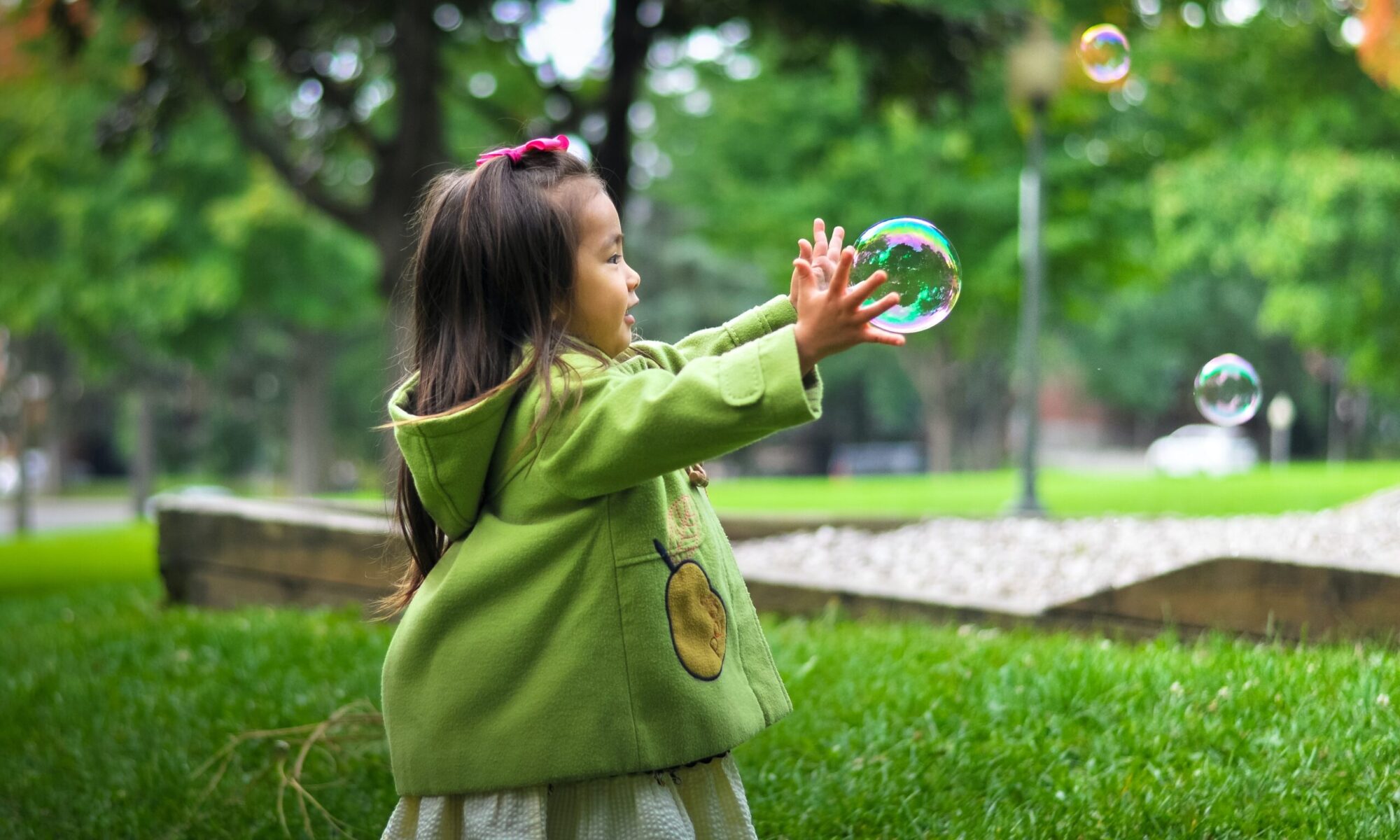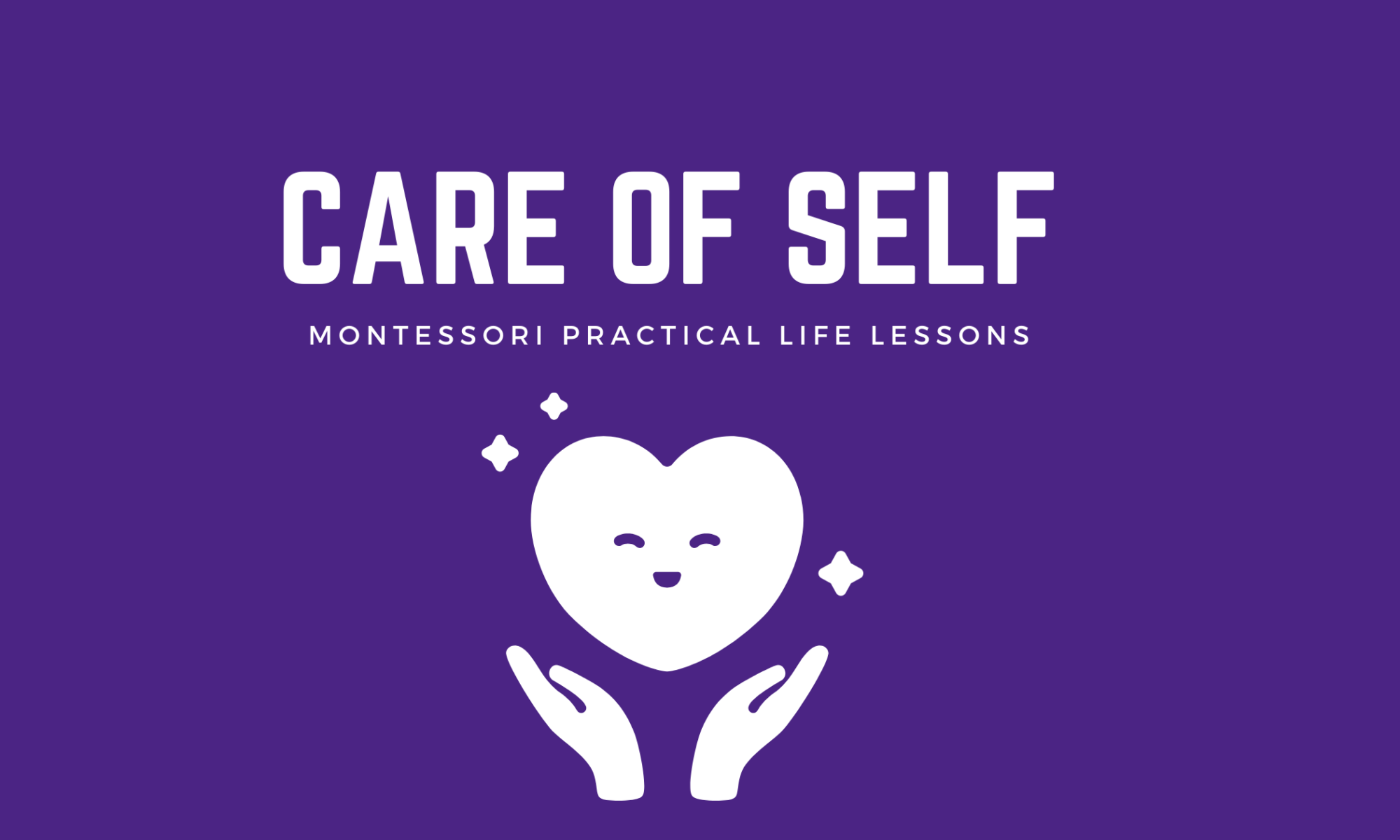Care of self is one of the three areas of Family work, known as Practical Life in Montessori Schools.
Starting to homeschool is a large transition for parents and children.
As we introduce a newly prepared environment and introduce ourselves in a new role, as teacher.
Practical Life activities do so much more than help the child gain independence – they are laying a neurological foundation for advanced skills involving coordination, concentration, abstract thinking, and overall executive function.
All things we need to develop for a successful school year and into adulthood.
Remember to be easy on ourselves in the home and plan a time when we will really enjoy working together.
Here are a few beginning care of self lessons to start this school year on a positive note.

Self-Care Station and Hand Washing
You can give babies a warm, wet washcloth and invite them to wipe their hands before and after eating.
For toddlers, you may prepare a basin of water on a short table to wash their hands in or a step stool if they can reach the bathroom sink.
Whatever setup you choose to use, show an example to your child of each step: wetting hands, using soap, rinsing, and drying.
Here is how to teach the handwashing presentation.
Preparing a basin of water
- Invite the child to do the work.
- Remove jewelry and roll-up sleeves.
- Pick up the water pitcher and proceed to the faucet.
- Fill the pitcher 3/4 of the way with warm water.
- Bring the pitcher back to the bowl.
- Pour slowly, aiming for the center of the bowl.
- Place the pitcher back in its place, or to the side.
Wetting Hands
- Immerse both hands into the water, putting hands flat and palms down to get both sides wet.
- Let your hands sit in the water.
- Gently shake hands over the bowl to release any drops.
- Then lift them out over the bowl.
- Pick up the soap with the dominant hand, wet the soap, and rub between the palms.
- We will be using a soap dispensing pump.
- You can purchase a child’s size reusable bottle or tie a couple hair ties around the pump of an adult sized bottle.
- Replace the soap in the dish.
- Rub the front and back of your hands.
- Be sure to go past the wrists.
- Massage each finger.
- Immerse both hands in the water to rinse, palms down.
- Turn hands over and rinse the back of the hands.
Nail Cleaning Extension
Cup the hands with palms facing towards you and scrub the brush back and forth, with the brush facing down and the hands closer to the water.
Turn the hand and brush the tops of nails. Repeat with the other hand.
Rinse the brush, shake gently to get the remaining water out then put the brush back.
Rinsing and Drying
- Rinse hands again, lift them out of the water, and shake off excess water.
- Take a towel and dry your hands, making sure to get in between the fingers.
- Place the towel to the side of the bowl, letting the child know that you’ll be using it to clean up.
- Grasp both sides of the bowl and pour into the bucket.
- Bring the bowl back to the table and wipe up excess water with a sponge.
- Empty the bucket.
- Wipe the bucket and the pitcher with the sponge.
- Wipe up any spills with the towel or sponge.
- Put the pitcher back into the bowl.
- Take the towel to the dirty towel basket.
- Replace the towel with a fresh one for the next person to use.
- Roll down your sleeves, replace jewelry and ask the child if they would like a turn.
Lotion Extension
Use a small amount of hand lotion and massage it slowly into your hands using the same motions used when washing the hands.

Care of Self: Dressing
Support your child’s growing independence by encouraging them to dress and undress themselves.
Putting on and taking off their own socks can be good tasks to start with.
Have a dedicated laundry basket available for your child to put their clothes in.
In the morning set out two options on a clothing rack. Seek clothing that is easy to put on and take off.
As cute as they are, steer clear of things like overalls and tiny buttons while your child is actively learning to dress themselves.
With practice, toddlers can master the entire dressing and undressing process, including shoes.
Prepare a short bench or stool by the front door with shoes that can be easily slipped on and a coat hook within the child’s reach.
With colder weather approaching, you may want to check out the Montessori coat flip process for an easy way for children to put on their own coats.
Dressing Frames
Some Montessori materials are still pending shipment including dressing frames and sensorial works.
We look forward to sharing these as how-to videos so you feel confident presenting the new work to your child.
Link to more self-care activities for children

Montessori Key Principle: Control of Error
Montessori materials are designed so that the child receives instant feedback as he works, allowing him to recognize, correct, and learn from his mistakes without adult assistance.
Putting control of the activity in the child’s hands strengthens his self-esteem and self-motivation as well as his learning.
Control of Error is automatic feedback that tells the child he needs to make an adjustment in order to complete the work successfully.
No teacher needs to intervene in the learning process.
The goal is that the child will develop a sense of satisfaction from the work itself, not be dependent on the approval of a teacher.
A child learns to make their own decisions and therefore to know and comprehend their instincts effectively.
They develop confidence and the ability to problem solve.
Hand washing is a great starting point with control of error for children and parents, as there is visual discrimination – are your hands really clean?

